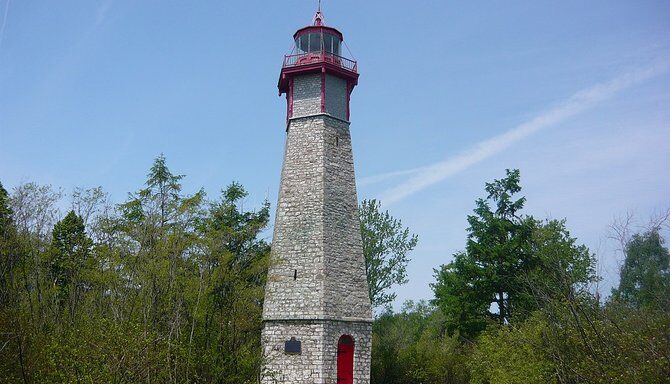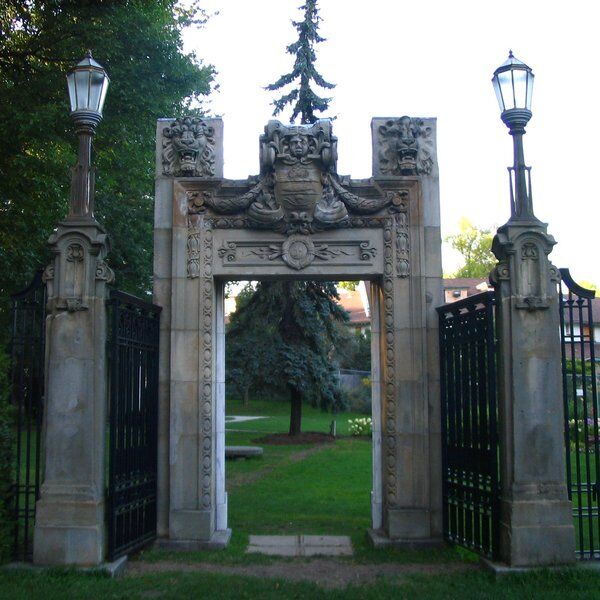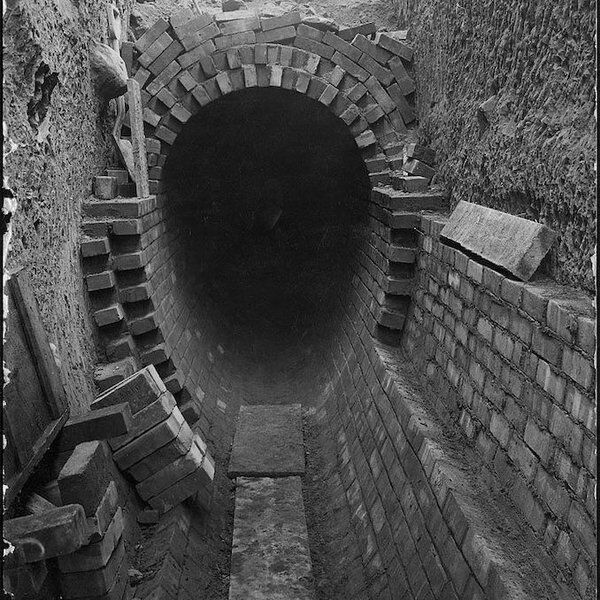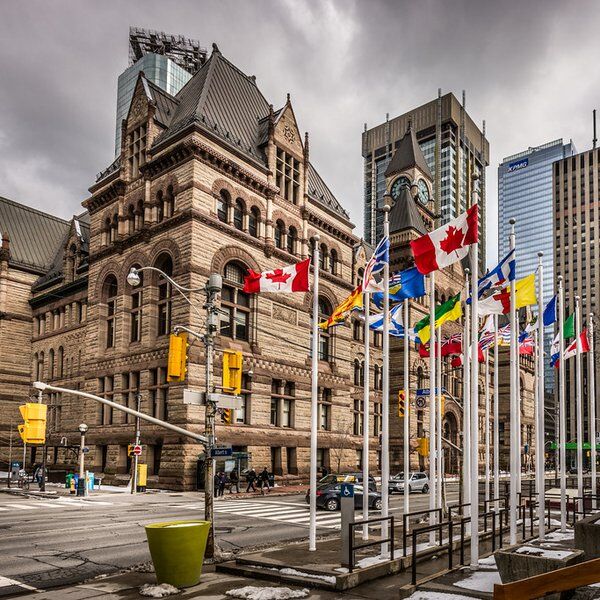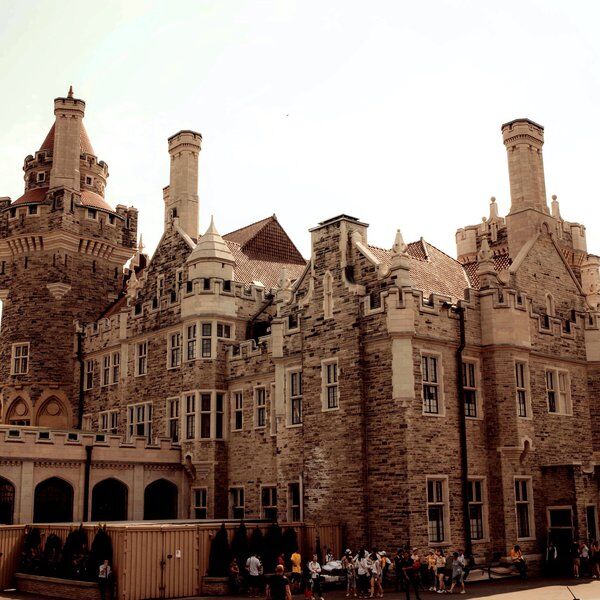The Origin Of Gibraltar Point Lighthouse
In 1793, first Lieutenant Governor of Upper Canada John Graves Simcoe established the town of York - which has since been absorbed into modern-day Toronto - and designated it a military centre. It became the capital of Upper Canada and, as such, a significant political location at great risk of attack from United States, with whom Canada was in conflict.
Simcoe took little time in identifying the tactical advantages available at the site: the vast Lake Ontario and the chain of 15 islands nearby that formed a natural harbour and barricade against approaching hostiles.
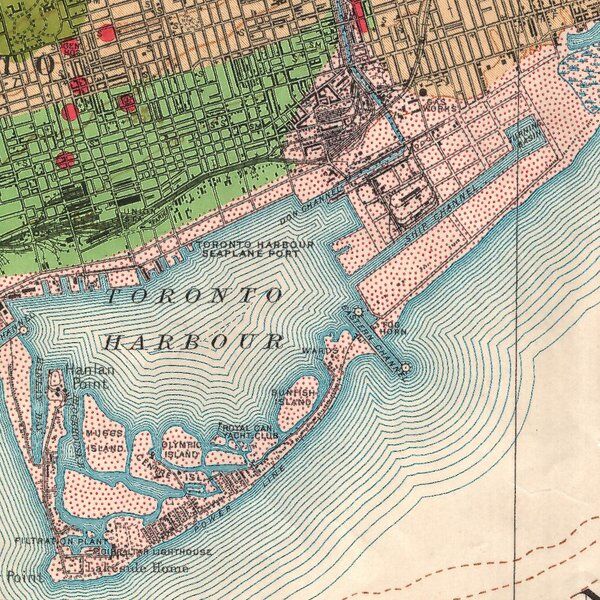
He ordered the construction of fortifications around the harbour area, with one fort being placed on the corner of the largest island, Centre Island. This he named Gibraltar Point after the Gibraltar Peninsular, a strategically important outcrop into the Mediterranean Sea.
"whoever controls Gibraltar also controls the movement of ships into and out of the Mediterranean"
Simcoe saw Gibraltar Point as equally valuable. It was a key part of his plan to make York impregnable.
In 1803, the Parliament of Upper Canada identified a different sort of security: “necessary and essential safety of vessels”. The movement of people and boats in and out of the harbour was of growing priority for labour and goods as well as for military resources. They commissioned the construction of three lighthouses: One on Simcoe Island, one on Mississauga Point, and another on Gibraltar Point. Of these three, only Gibraltar Point remains.
The Gibraltar Point Lighthourse was completed in 1808. Its initial build rose to 52ft, although this was extended to 82ft in 1832. A prominent landmark guarding the harbour approach, it soon became a symbol of modern-day Toronto.
For all of its long legacy and service to the city however it is best known for a gruesome mystery: the death of John Paul Radelmüller.

The Life Gibraltar Point Lighthouse's First Keeper
Appointed in 1809, John Paul Radelmüller was the lighthouse's first keeper. He was born in modern-day Bavaria between 1757-1763 and grew to be a servant to royalty who toured Europe with his employer until 1798.
He had originally intended to retire after this and settle with his relatives in Germany, but the French Revolution and the wider unrest it caused made this impossible. Not for the first time, his goal of a quiet farming life was denied.
He took up a new royal post as a porter to Prince Edward - the father-to-be of Queen Victoria. This time his work took him to British North America where he was absorbed into the ongoing conflict with the US.
In British North America, Radelmüller served various important military figures such as Sir John Wenworth, Lieutenant-Governor of Nova Scotia. He was growing old however and soon declared he wanted to
"redire [sic] a little before I die"
This goal saw him move to modern-day Toronto in 1804.
Denied land along with other German settlers, he was once again forced back into work, this time as an interpreter and translator. With other German nationals, he founded a school to teach English and German. One of the pieces he translated concerning the manufacture of rope for the Royal Navy paved the way for his final position: As Gibraltar Point's first keeper.
He tended to the lighthouse between 1809 to 1815, serving through the war of 1812, marrying, and having a daughter. But then something terrible happened.
Death At Gibraltar Point Lighthouse
On the night of 1815, Radelmüller suddenly vanished.
He had a reputation for inviting soldiers from the nearby Gibraltar Point Fort to the lighthouse for drinks, and the soldiers - being under less scrutiny than their mainland-based peers- were always keen to take up the offer.
Depending on which source you read, Radelmüller was either a polite and calm man with a kind demeanour who would be only too happy to share his alcohol in return for company, or an unscrupulous bootlegger who took advantage of his position to smuggle booze and make easy money at a difficult and fraught time. Detailed research leans towards the former, but the more scandalous second picture has endured as a legend.
Once investigators realised Radelmüller had disappeared, the gory scene at the lighthouse led them to believe he had been brutally attacked and murdered. They further speculated that his body had been dismembered and its parts scattered and buried around the harbour area in an act of panic.
Two likely perpetrators were soon discovered: Unseasoned, locally-based soldiers from the Fort. They were apprehended and put on trial.
Their motives? Unclear.
Alcohol was the most likely cause. Some accounts state that Radelmüller, the supposed bootlegger, angered the soldiers after selling them poor quality booze. Others say the freezing conditions that night meant the booze froze and gave the impression of being of inferior quality. Either way, the soldiers were likely enraged and, thinking they had been conned, turned on Radelmüller, putting a violent end to his trade.
Other accounts claim the soldiers arrived at the lighthouse already spoiling for a fight and Radelmüller the benevolent host refused to serve them anything. A final theory is that the three of them had enjoyed the night drinking together, but as the hours drew late and tempers ran high, Radelmüller stopped serving them. Angered by inhospitable treatment, the soldiers turned on him.
Reports on the subsequent trial have been lost and the case is further muddied by the fact the soldiers were found innocent. Without a body, any and all theories put forward were written off as conjecture and the men walked free.
The discovery of human remains close to the lighthouse in 1893 by then keeper George Durnan did little to provide a definitive answer. A jawbone buried in a sodden coffin implied Radelmüller's remains had been treated with some degree of respect, but who had buried him? And had the rest of his remains been swept away or taken by the island? How could anyone be certain that the jawbone even belonged to Radelmüller?
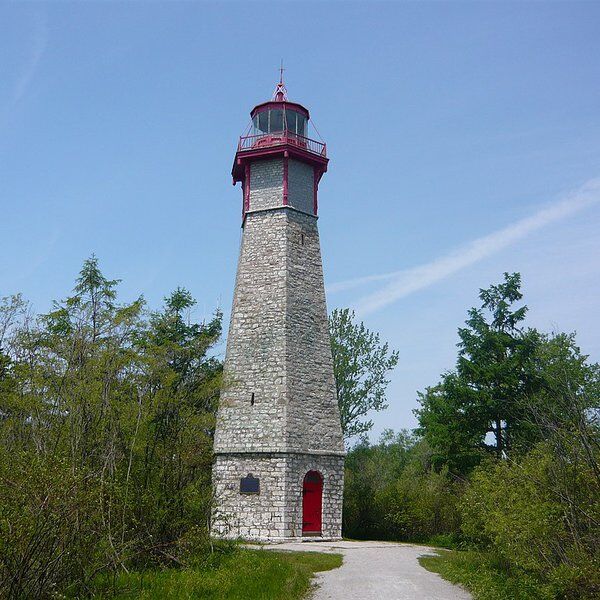
Gibraltar Point Lighthouse in the modern day
Radelmüller’s spirit is believed to have remained at the Gibraltar Point Lighthouse, perhaps unsettled by the rumours that have endured about him or the lack of a satisfying resolution to his case. Or perhaps this industrious German immigrant who left behind a wife and daughter stays on to fulfil his duty of tending the lighthouse, doomed to continue working after so many attempts to retire were stolen from him. Either way, witnesses report sounds of moaning and phantom footsteps walking the lighthouse stairs.
Despite being modernised over the decades that followed, Gibraltar Point Lighthouse has now been decommissioned. It is open for tours for any who might want to investigate the scene for themselves.
